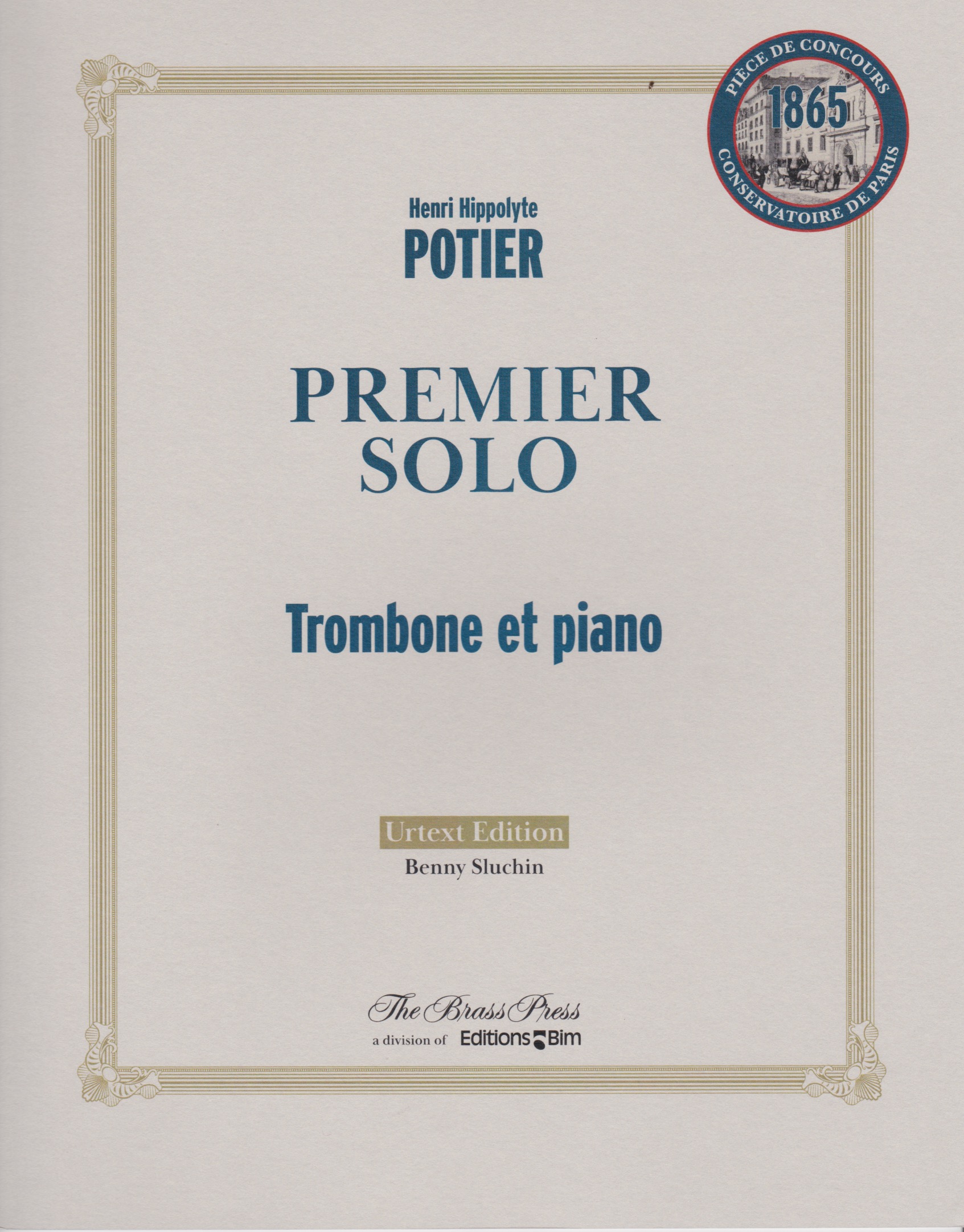Henri Hippolyte Potier
 Premier Solo:
Premier Solo:
Arranged by Benny Sluchin
Trombone and piano
Sion, , Switzerland
Publisher: Editions Bim
Date of Publication: 2021
URL: http://wwww.editions-bim.com
Score and solo part.
Primary Genre: Solo Tenor Trombone - with piano
 Premier Solo:
Premier Solo: Arranged by Benny Sluchin
Trombone and piano
Sion, , Switzerland
Publisher: Editions Bim
Date of Publication: 2021
URL: http://wwww.editions-bim.com
Score and solo part.
Primary Genre: Solo Tenor Trombone - with piano
Henri Hippolyte Potier (1816-1878) was primarily known as a vocal accompanist and vocal coach in the opera houses of Paris, and later as a professor of voice at the Conservatoire de Paris. His compositions and arrangements were an aside to his primary occupation and have not survived into the present time. An exception is the Premier Solo which was written for a valve trombone with six piston valves. There is a picture of such an instrument included in this edition. The internationally celebrated trombonist Benny Sluchin, who prepared the Urtext Edition of this work, wrote an informative article that is included in the Bim edition: The Premier Solo for the new Sax Trombone with six valves and independent tubes is dedicated to “my friend Dieppo” who was the trombone professor at the Conservatoire between 1836 and 1871, and also of the class of valve trombone for the military students. The Premier Solo was imposed at the 1865 competition for the valve trombone. It was customary to order pieces for the competition from composers with a teaching activity in the Conservatory. The trombone with six valves and independent tubes takes its principles from the slide trombone. Each one of these six valves corresponds to a position of the slide trombone: the first valve corresponds to the 2nd position, the 2nd valve to the 3rd position, etc. Thus, the sound corresponds to a given length obtained with a valve. The Premier Solo recalls a vocal Arietta. After an introduction (Allegro Maestoso) in F major, a short recitative leads to an Allegro Moderato. A second, more lyrical theme, concludes this part of the solo. The piano repeating the introductory measures ends this part. The Andante in D minor, which follows, in 6/8 and lyrical character, gives the trombonist the opportunity to show his virtuoso abilities on two occasions. The initial Allegro is at the base for the end of the piece, where the trombone is offered a highly developed optional line that culminates in an ultimate cadence. The Premier Solo (it can’t be deduced that there existed others) is a typical example of a contest piece: it showcases an inventory of the instrumental technique of that period. Having been composed by a musician who worked closely with vocalists in the field of opera, this music could well have been a scene for solo voice in a typical 19th century opera performed in Paris. The soloist is the star. The accompaniment, aside from some brief introductions, says little on its own. The music reflects the popular operatic style in vogue in Paris at that time, especially as found in the bell canto operas of Rossini, Bellini, and Donizetti. Featured were cadenzas, cantabile opportunities, as well as technical displays. This solo certainly features all of those. Playable by a good trombonist, euphonium will also be a good fit. This is another recently discovered addition to the repertoire from the romantic age. The layout, paper quality, and printing are first class in every detail.
Reviewer: Karl Hinterbichler
Review Published June 24, 2023
Review Published June 24, 2023